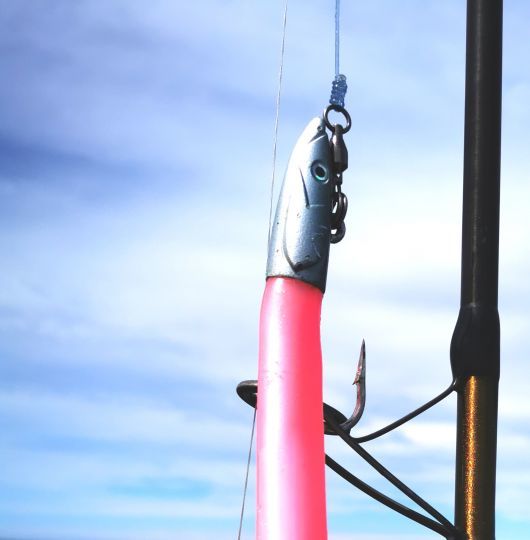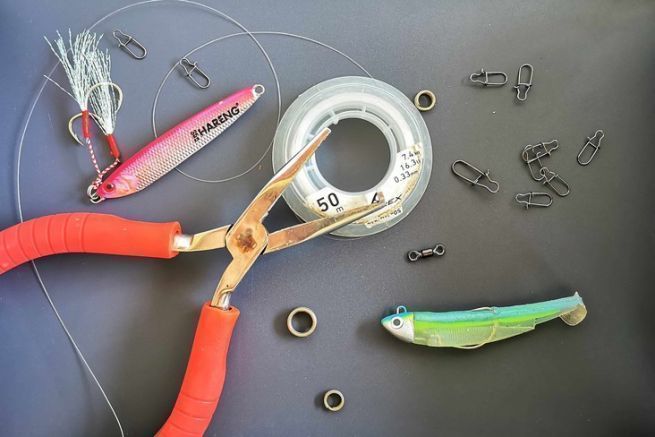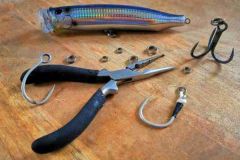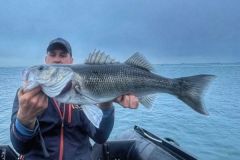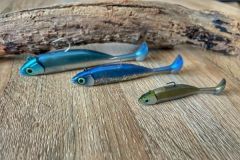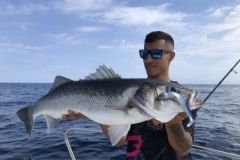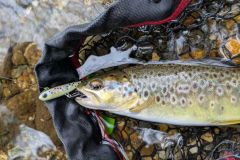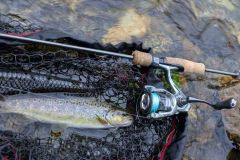1 - The knot, the simplest method!
We are not going to detail all of them, each one will choose the one that best suits him.
Using a knot to connect the lure to the leader is the simplest method because it does not require any additional accessories. This option is also a guarantee of discretion that I use mainly for fine fishing or when the lead heads do not exceed 10 grams.
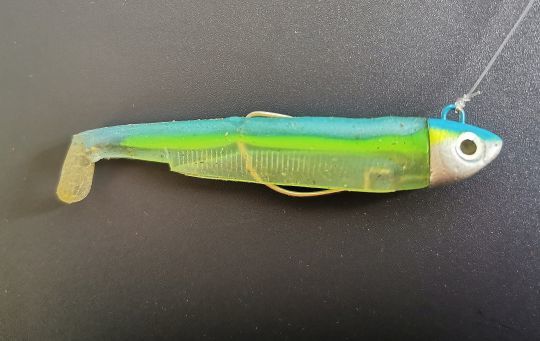
For small lures, using a staple, even a small one, can have an impact on the lure's swim.
However, I note a few drawbacks to the use of nodes:
- On large diameter fluorocarbons, some knots tend to slip and not hold.
- With each change of lure, you shorten the leader a little more.
- Tying a knot can be a difficult step for beginners.
2 - The staple, the most practical option!
It is without doubt the option most used by fishermen. Personally, I use it as soon as I fish with lures associated with leaded heads over 15 grams or if there is no risk that the clip will alter the swim.
Regarding the size, the smaller the number, the smaller the size. For a versatile use in the sea, with lures ranging from 15 to 60 grams, I use the size 1 or 2.
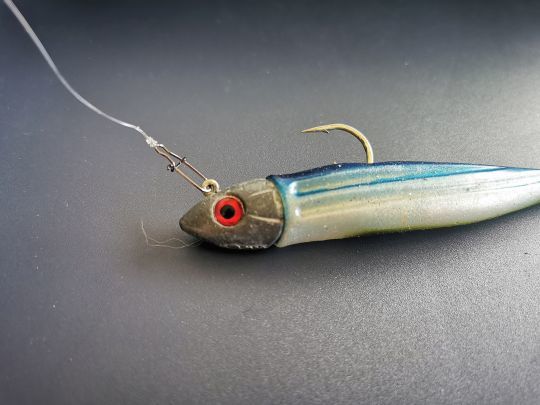
Different models are of course available. I prefer American staples without rolling swivels. Using a clip allows you to change lures quickly, without reducing the size of your leader.
That said, I have lost a few fish, especially yellows that have a powerful rush at the touch, due to the opening of the touch.
In addition, repeated opening and closing of the same staple can make the material work, weakening the staple and thus making it less resistant. It is also possible to simply forget to close it. Trust my experience!...
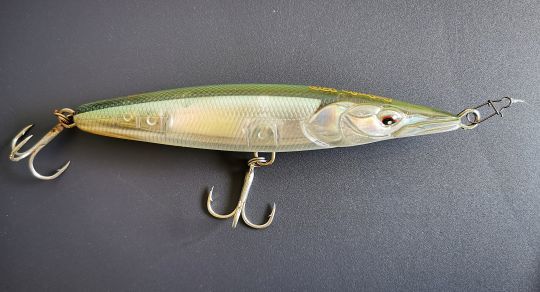
In all cases, the result will be the same, namely the loss of the lure or a fish. So be careful when using staples and check their condition from time to time.
3 - The broken ring, the safest option but the most constraining!
I discovered this alternative while fishing for bluefin tuna. The use of broken rings has several advantages and particularly a much higher resistance compared to a clip of the same size. You can use small rings on small lures without altering their swims.

This option requires the use of broken ring pliers. For large ring patterns, a quality pliers will be required.
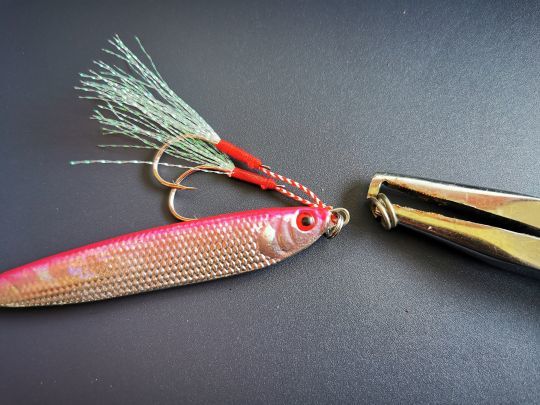
The only drawback I find is the absolute necessity of using pliers. Be careful about the quality of the broken rings used.
Repeated opening with pliers can quickly deteriorate them. I use the Owner brand which gives me satisfaction for bluefin tuna fishing as well as for finer fish.
